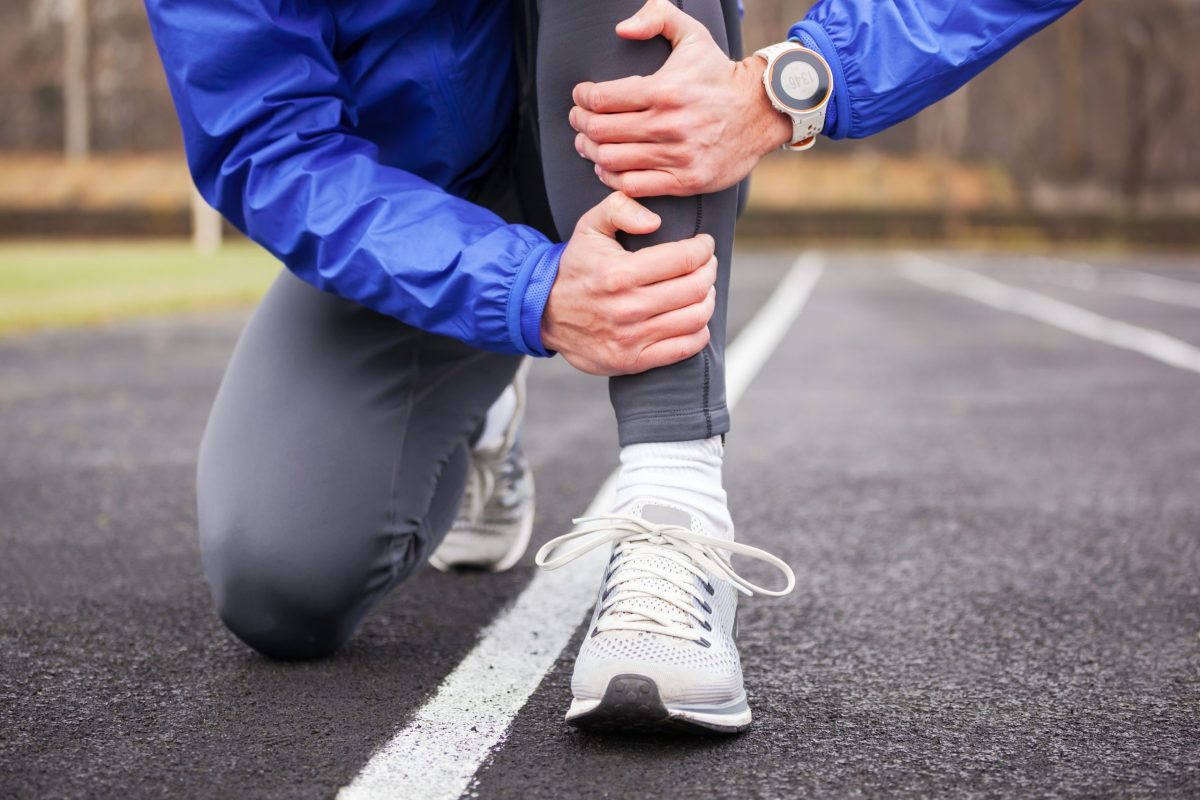
If there is one injury nearly every runner has experienced at some point, it is shin splints. Also known as medial tibial stress syndrome, this condition causes pain on the inner part of the tibia, or shin bone. Although any vigorous exercise can irritate the tendons, muscles, and bone tissue around the tibia, the condition is most often associated with running.
The Sports Medicine team at EmergeOrtho—Triangle Region sees many patients sidelined by shin splints. Although the vast majority of athletes are able to return to their favorite sport after a period of rest, ongoing or severe shin pain should be evaluated by a doctor.

You can rely on our board-certified, fellowship-trained orthopedic surgeons to find the cause of your pain and recommend a treatment plan to help you Emerge Stronger. Healthier. Better.
If you have been wondering why your shins hurt when you run, what causes shin splints, and how to prevent pain in your shins, keep reading for expert insights and advice.
What Are Shin Splints?
Shin splints cause pain along the inner part of the shin bone, where the muscle adheres to the bone. It is an overuse injury: when the muscles and bone tissue in the leg are overworked, they can become inflamed and painful. The pain can occur both during and after exercise (most people find walking or running worsens the discomfort) and may be dull, throbbing, or sharp. Your shins might also be sore and sensitive to touch.
Why Runners Are at Risk for Shin Splints
Runners, in particular, have a higher risk for this common injury. When you run, your leg muscles and connective tissue are repeatedly pulled, which causes painful inflammation and swelling in the shin. Without rest and time to heal, the condition can worsen and increase the pain.
Although runners have the most risk, other sports, habits, and anatomical features that put repetitive stress on the leg muscles can also cause the injury. These include:
- Dancing
- High-impact sports like gymnastics and basketball
- Power walking
- Flat feet, high arches, or rigid arches a
- Wearing unsupportive shoes while exercising
Not all runners are doomed to medial tibial stress syndrome, though. It is most likely to occur when you begin a new exercise program or increase the intensity or duration of your workouts without building your endurance. Running on uneven terrain also increases the potential for muscle inflammation.
Shin Splint Diagnosis and Treatment
If you have any type of shin pain during or after exercise, see an orthopedic specialist to diagnose the issue. Although aches and pains in your lower legs often indicate shin splints, a doctor can rule out other potential injuries, such as a stress fracture or tendinitis. These conditions can have similar symptoms, but will not improve without treatment.
Physicians diagnose shin splints by taking a medical history, examining the affected area, and performing imaging tests (usually an X-ray first, followed by an MRI or bone scan if they suspect a stress fracture). Treatment usually happens at home. The most common recommendations for stress fractures include:
- Rest. Taking a break from running and other high-impact exercises for at least a few allows the muscles and bones to heal. When you return to activity, it should be gradual to prevent reinjury.
- Ice. Applying ice to the shins 3 to 4 times a day for 10 to 15 minutes can help reduce pain and inflammation.
- Over-the-counter pain relief. Your doctor may recommend an over-the-counter nonsteroidal anti-inflammatory drug (NSAID) to reduce pain and swelling.
- Physical therapy. Some people benefit from physical therapy to help strengthen their leg muscles and make a safe return to activity.
- Footwear adjustments. Changing to more supportive footwear designed for running can help reduce the risk of reinjury. Your doctor may also recommend shoe inserts or orthotics to support your arches and reduce the stress on your leg bones and muscles. Some runners switch to barefoot running, but there is no definitive evidence it reduces risk for shin pain.
If you follow your provider’s instructions, it is very unlikely you will need further treatment for shin splints. Participating in sports in spite of pain is not recommended since untreated shin splints can progress into stress fractures.
How to Prevent Shin Splints
Taking your time when starting a new exercise program is the best way to prevent shin splints. When starting a new routine, gradually increase the intensity and duration. A good rule of thumb is to aim for a 10% increase each week. Do not forget to stretch before and after each workout.
If you start to feel pain while running, stop or reduce your intensity. Resting between workouts and alternating your runs with low-impact activities like swimming or yoga can help prevent an overuse injury. Give your body time to heal between workouts. Never push through the pain, as that can make things worse.
Wearing the right footwear is also critical to preventing injury. Visit a running store where you can have your feet and gait professionally evaluated and matched to the right shoes. Regardless of the shoes you are wearing, try to avoid running on hard or rugged terrain to avoid putting excess stress on your shins.
Sports Medicine at EmergeOrtho—Triangle Region
If you suspect you have shin splints or any other sports injury, we encourage you to schedule an appointment. Or, call us any time at (919) 220-5255. We are here to help you live pain-free, and get back in the game as soon as possible.







